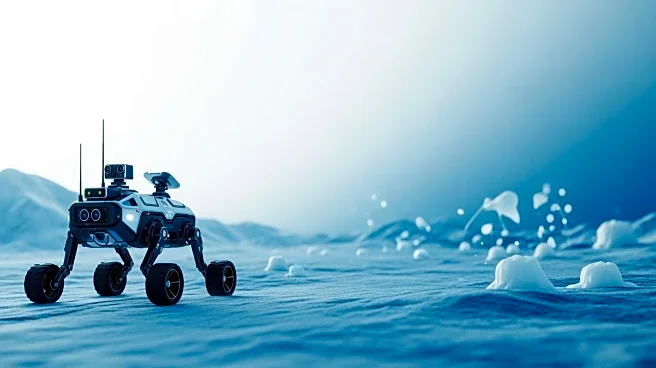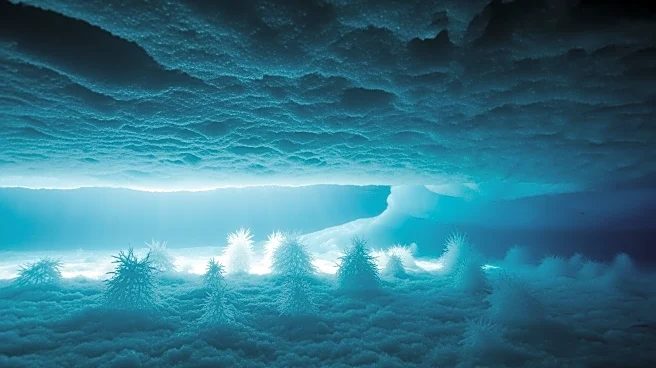What's Happening?
Researchers in Antarctica's western Weddell Sea have discovered thousands of icefish nests beneath the ice, thanks to the robotic exploration vehicle 'Lassie'. This discovery was made possible after the A68 iceberg broke away from the Larsen C Ice Shelf
in 2017, exposing new areas for scientific study. The nests, found in organized patterns, are maintained by the icefish, which guard their eggs from predators. The expedition aimed to study the impact of ice shelf disintegration on marine ecosystems and also sought the wreck of the Endurance, Shackleton's lost ship.
Why It's Important?
The discovery of the icefish nests highlights the ecological significance of the Weddell Sea, suggesting it may be a Vulnerable Marine Ecosystem. This finding supports calls for the area to be designated as a Marine Protected Area, which would help preserve its biodiversity. The research underscores the importance of understanding how environmental changes, such as ice shelf disintegration, affect marine life. Protecting these ecosystems is crucial for maintaining the Antarctic food web and mitigating the impacts of climate change on global sea levels.
Beyond the Headlines
The discovery of the icefish nests offers insights into the survival strategies of marine species in extreme environments. The 'selfish herd' behavior observed among the icefish reflects a balance of cooperation and competition, enhancing survival chances. This research contributes to broader discussions on marine conservation and the need for international cooperation in protecting vulnerable ecosystems. The expedition's success in navigating challenging ice conditions also demonstrates the potential of advanced technology in expanding scientific knowledge.














